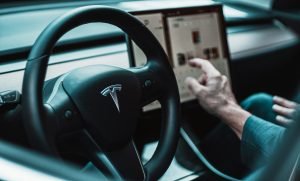This definitive Tesla camping guide describes everything you need to know to camp safely and cheaply in your Tesla using the Camp Mode function.
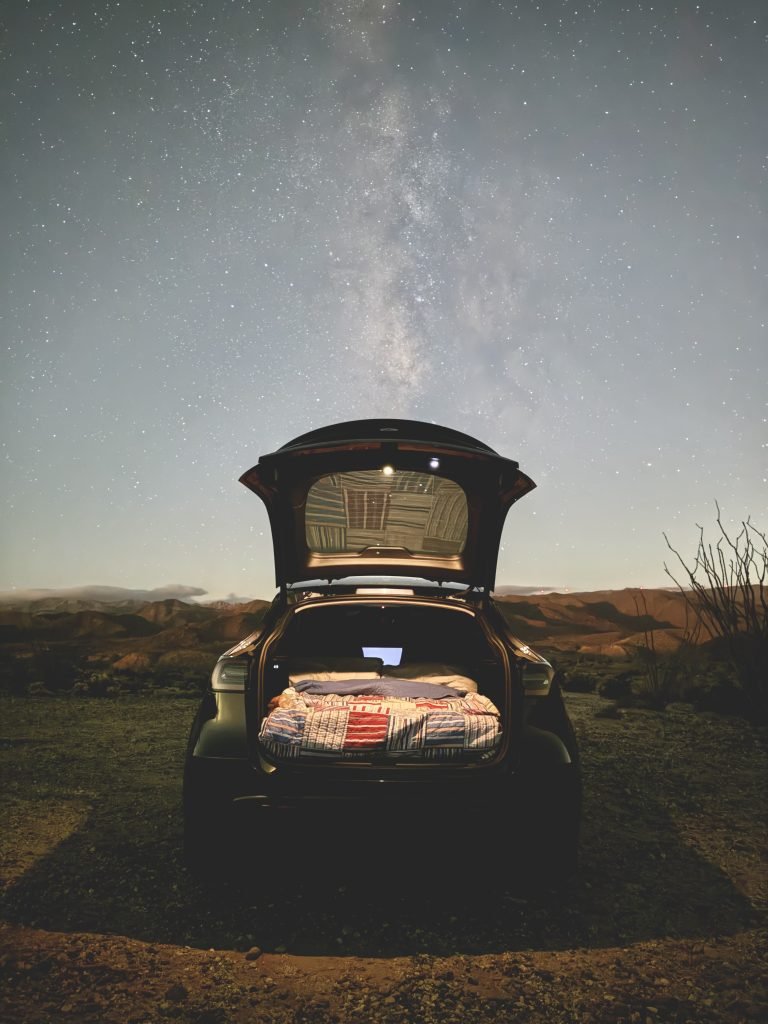
Where to start? I’ve never been one for camping, that is until I tried camping in my Tesla Model Y. I’ve camped in tents at a few campsites, but just have never really enjoyed it that much. I don’t like how much you need to invest in the gear, how much packing is required, and at the end of the day, sleeping in a tent is not that comfortable. It always kind of felt to me like we were working too hard to bring the indoors to the outdoors while attempting to connect with nature.
So when my partner got a Tesla Model Y after many years of research and saving up, they were so excited to take it camping. I reluctantly agreed…but let me tell you- after we took our first camping trip in the Tesla, I was hooked. It was a total glamping experience that was so easy and comfortable. And not to mention super cheap (if you don’t count the cost of a car)! Since then we camp in the Tesla frequently, which has allowed us to sleep comfortably in some of the coolest destinations around the United States that you just can’t get with a hotel.
After talking with people from all over on our trips, I’ve learned there is a lot of interest in camping in electric vehicles (EVs), so I am here to share with you this ultimate Tesla camping guide! I’ve included everything you need to know to camp safely in your electric car and have a blast while doing it, as well as some tips from my personal experiences camping in my 2023 Long-Range Tesla Model Y.
✈️ My Travel Essentials – What I Actually Use & Recommend! 🌍
I’ve traveled extensively and use these tools on every trip. They’ve saved me money, time, and headaches, and they’ll do the same for you! 👉 Book smarter & save more 🚀
✅ 🏨 Best Hotel Deals → Expedia
I book all my hotels through Expedia because they offer cash-back rewards and some of the lowest rates online. Tip: activate Rakuten for extra cashback and $30 free.
✅ 🎟️ Skip-the-Line Tours & Unique Experiences → Get Your Guide
Want to avoid lines and overpriced tourist traps? I use Get Your Guide to book skip-the-line passes, tours, and hidden gem activities. Use my link for 10% off your first booking!
✅ 📱 Stay Connected Without Roaming Fees → Airalo
No more SIM card hassle! I use Airalo’s cheap, reliable eSIMs to stay connected instantly in over 200 countries. Use my promo code AIRALOESIM10 for 10% off!
Short on time? Here’s the main takeaway:
The most important aspect of camping in a Tesla is planning ahead. Plan your route, charging locations, and campsite before departure. Pack everything you need to camp safely, such as adequate food, water, and first aid. To sleep, put the seats down flat, set up your mattress, and turn on Tesla Camp Mode from the climate controls screen. Read my full Tesla camping guide for more details.
Table of Contents
Section 1: Why the Tesla Model Y is Perfect for Camping – Top Benefits
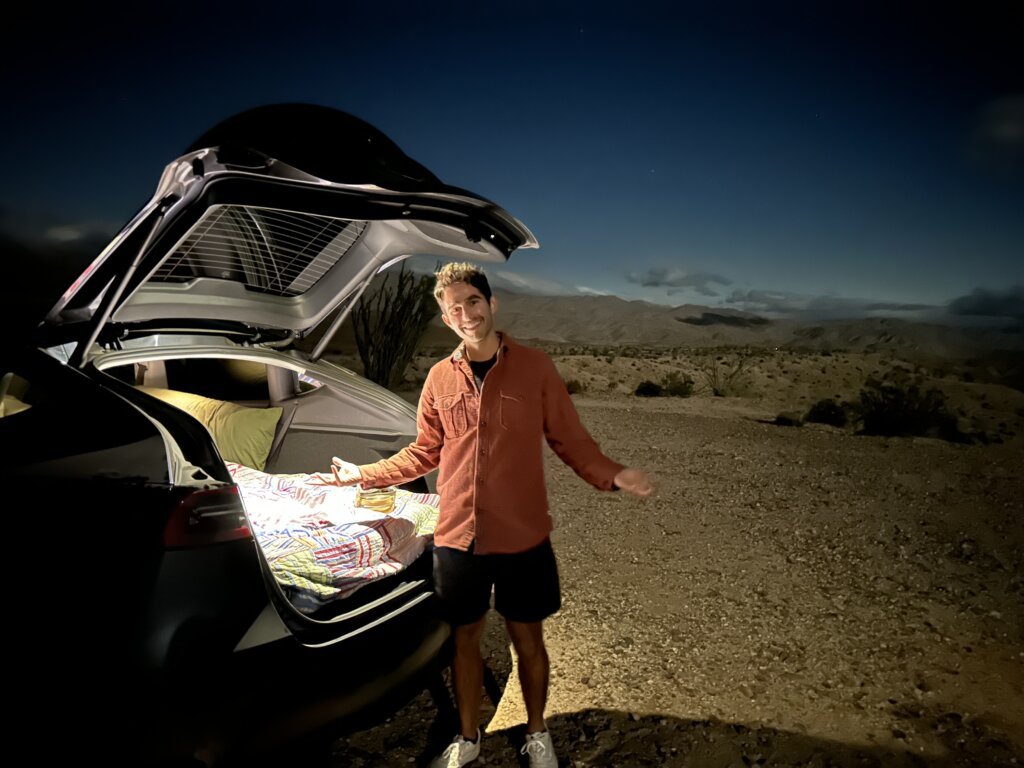
The Tesla is the ultimate glamping vehicle for a variety of reasons. Here is a brief list of why the Tesla (Model Y) is perfect for sleeping in and camping.
✅ Tesla Camp Mode: All Tesla cars come with the Camp mode feature. This is a custom setting designed specifically for camping, that allows you to control the car’s interior climate while sleeping with minimal drain on the battery. It keeps the electricity on so you can charge your phone or play music. It even turns off if the battery drops too low.
✅ Size: With the seats folded flat, the Tesla easily fits a mattress in the back. It allows you to comfortably sleep lying down. It’s like upgrading your camping experience from economy to lay-flat first-class seats!
✅ Safety: Sometimes sleeping in a tent outside feels unsafe. Whether that is from fear of strangers, animals, or inclement weather. Sleeping in an electric car eliminates that concern. The car can be locked while sleeping and is safe from storms. And there’s no way a bear can catch your Tesla hitting 60 miles per hour in 4.8 seconds.
✅ Storage: The storage in the Tesla is unbeatable. First, you have the frunk (front trunk). In addition, the larger models have sub-trunks that allow you to store items underneath the trunk, which is great especially when the seats are laid flat while sleeping. The trunk itself is huge as well. The Tesla is great for camping because it has tons of extra storage that allows you to put things out of the way.
✅ All-Wheel Drive: Some versions of the Tesla are all-wheel drive, making driving over difficult terrain easier.
✅ Sustainability: No reliance on burning fuels! EVs are the sustainable choice. No more polluting the beautiful nature destinations we love to camp in.
✅ Noise: When you’re trying to connect with nature, there is nothing worse than hearing a combustion car engine start-up. The beauty of EVs is that they are silent and leave no trace or emissions.
✅ Comfort: All Tesla cars, even the base models, come with a slew of luxury features (pre-conditioning, heated and cooled seats, surround sound music, etc.) that make them very comfortable.
✅ Car interior: The interior of the Tesla was practically made for camping. The whole roof is made of glass so you can stargaze from bed! The screen can also play all sorts of games, show a campfire, and even stream your favorite Netflix shows.
✅ Electricity: Because electric cars do not rely on gas, you can run them for as long as you want without worrying that you won’t be able to start the engine back up. You can use the car to charge your phone or power camping cooking gear, play music, and control the climate. It is awesome having the trunk open, looking out at the stars with surround sound music playing.
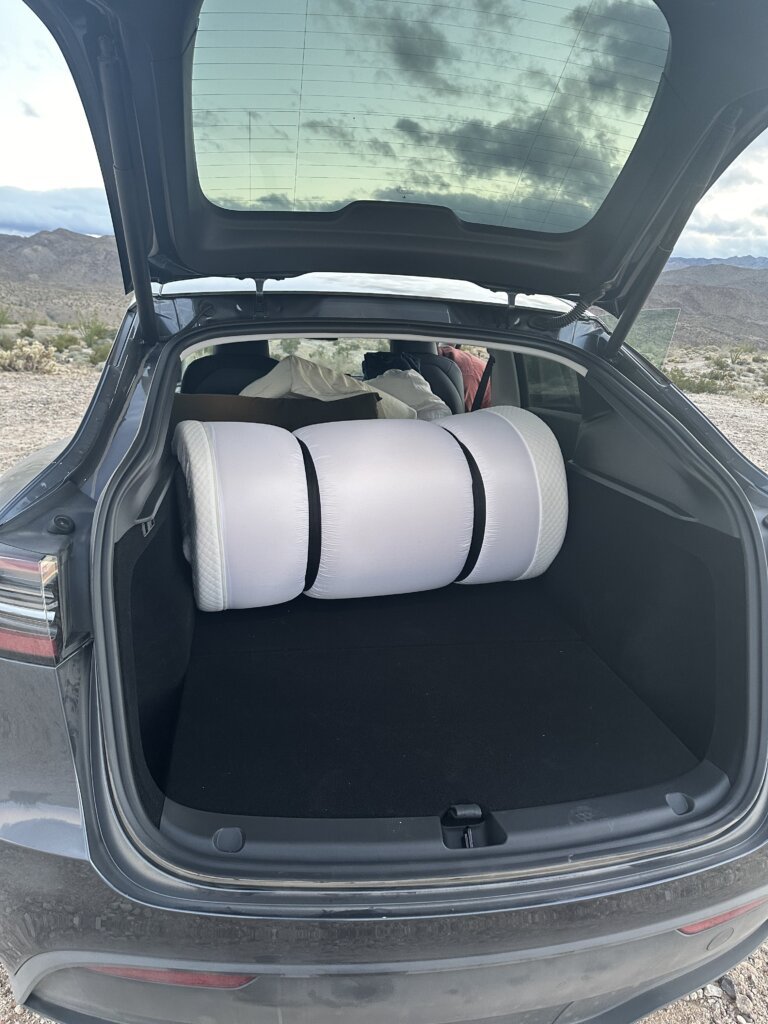
Section 2: Planning Your Tesla Camping Trip Step-by-Step
I know planning a camping trip can be overwhelming. I’ve broken it down for you here so you can learn how to pick where to camp, plan your route with intermediate charging points, and not forget to pack any of the necessities.
As an example throughout this article, I will be using a camping trip I did in Yosemite National Park in my 2023 Tesla Model Y.
2.1 Picking Your Destination
Picking your destination can be challenging, but very fun. Consider where you want to see most, how much time you have for your trip, and how far you’re willing to drive. I typically look within a 7-hour drive radius. Anything outside of that can feel like a burdensome amount of driving. Perhaps pick a nearby national or state park, or a nature reserve or beach.
Here is how I picked a destination for my trip: I live in San Diego and I’ve always wanted to visit Yosemite National Park. It is far, but doable on a long weekend. I know there are plenty of chargers along the way. I already have a National Park pass so I do not have to pay the entry fee, and I know Yosemite will get me out into pristine nature.
2.2 Researching Campgrounds
Once you’ve determined your destination, you need to figure out where you will camp. There are two options:
🚙 Campground / RV Park: Staying in a campground or RV park is the standard option. There is a wide range of what this looks like. Most often, you pay a reservation fee, and in return can use amenities like bathrooms. Some campgrounds have electrical hookups where you can charge your car. Before selecting your campground, make sure to do some research and pick the one you like best based on features that matter to you such as views, amenities, and location. It is important to reserve these spots in advance and make sure they allow car camping. Consider proximity to charging if the campground does not have electrical hookups.
🏕️ Dispersed Camping: In some locations of the United States, dispersed camping is allowed. This means you can camp in undesignated areas of public lands, such as national forests or Bureau of Land Management areas. Unlike traditional campgrounds with designated sites and amenities, dispersed camping allows you to find your own secluded spot in the wilderness. The pros to this are that it is free and you are more connected with nature, but the cons are that there are no amenities, such as bathrooms, running water, or electricity. Always check if dispersed camping is allowed in your destination before doing it. It is far less common than the campground option. Consider proximity to charging when picking a dispersed camping location.
When choosing between the two options, think about what is right for you specifically. Many people prefer the amenities of campgrounds, whereas others prefer the privacy of dispersed camping. For my trip, dispersed camping was not an option. So I researched the campgrounds in Yosemite and picked the one with the best view and decent proximity to a Tesla Supercharger. I booked the campground far in advance as they sell out early in popular destinations like National Parks.
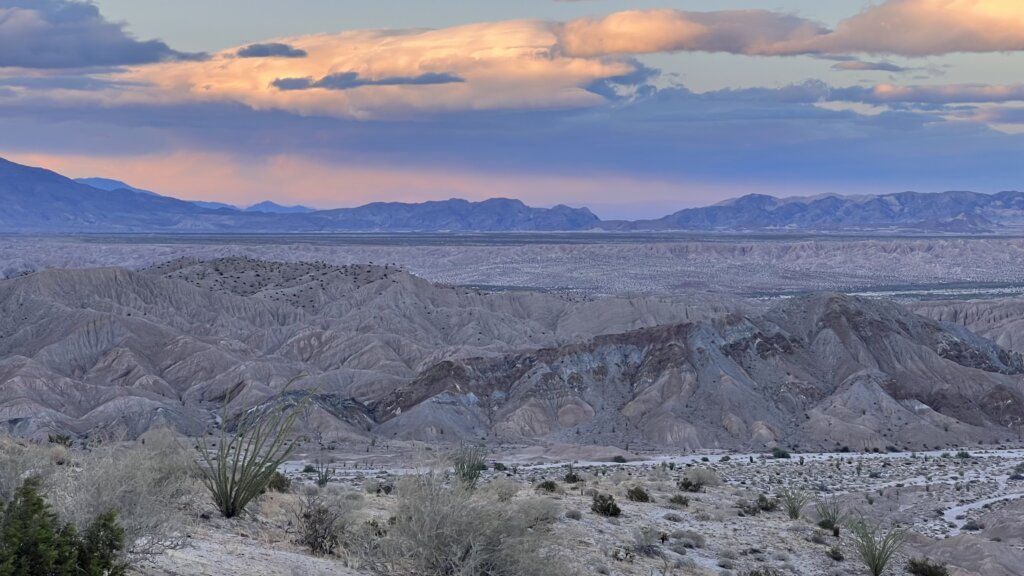
2.3 Route Planning
The next step is to strategize your journey with charging stations along the way. I recommend creating a rough itinerary of what you want to do and then putting the full itinerary, including your home and campground, into the app A Better Route Planner. It will do the rest for you and tell you when and where to stop to charge your electric car’s battery. Remember to pay attention to the battery percentage before sleeping in your EV to make sure you have enough charge, even when using A Better Route Planner.
For my trip, I put my home address into the app as my starting destination, my campground and Yosemite Valley as the intermediate destinations, and then my home address again as the final destination. The app then told me how to optimize my trip to ensure I had sufficient battery. I adjusted it slightly to best match what I wanted and saved it offline for use during my trip.
2.4 EV Camping Packing Checklist – Best Tesla Camping Gear
Make sure you have everything you need for a great camping trip. Here is a list of the items you need specifically for camping in a Tesla. I excluded all standard travel and camping items for simplicity.
✅ Mattress (Model Y): There are all sorts of mattresses available for sale that are designed specifically for camping in Teslas. I’ve tried a few, and have a secret you need to know. You don’t need to buy one of the custom-shaped mattresses, one that folds out special, one that inflates, or one that fits in the sub-trunk. The Tesla Model Y perfectly fits a twin and twin-XL mattress.
All you need is a 5-inch-thick twin (or twin-XL) foam mattress that you can put in your Tesla before you leave. They roll up fairly easily because they are made of foam, and are way comfier and cheaper than any of the other options. Either use a bungee cord to keep it wrapped up, or one of these vacuum bags also works great if you want to save even more room. It fits 2 average-sized people without any issues.
✅ Mattress (Model 3): If you are in a Model 3 you will have less space. In this case, I actually do recommend purchasing one of the custom inflatable Tesla mattresses because it will fit better. Unfortunately, this option is pricier than just the mattress and has its limitations such as less thickness (meaning less comfort). This option is also good for Model Y drivers who want to save on storage space.
✅ Bedding: Another pro tip, you can bring any bedding and pillows you have already in your house. A queen sheet is perfectly fine on a twin mattress. Grab a heavier blanket too if you are camping in a colder climate. A sleeping bag also works great. If you don’t have bedding already, I included a recommendation below of what I use. I like it because the bedding is super compact and fits in the back of the car seat.
✅ Window Shades: I like to use window shades for extra privacy and so less light infiltrates in the morning. They are a game changer.
✅ Mobile Connector: If you are camping at a campground with electrical hookups, you will need a Tesla Mobile Connector to charge your EV’s battery. It is also a good idea to bring an extension cord.
✅ Adapters: If you are camping at a campground with electrical hookups, you will need an adapter to connect your Tesla Mobile Connector to the outlet. Check which type of outlet will be available at your campground before you leave. The primary types of adapters and their purchase links are explained in the charging section below. If you’re not sure, you can always just bring them all. If you’re interested in a deeper dive into the different types of outlets and adapters for EV charging, refer to my other article here.
✅ Tesla-Compatible Gear: Because you are camping in an EV, you can draw from the car’s battery to power some electronics. For example, you can charge your phone or run some small camping appliances. I included a few of my favorite extras below. These are all optional and not needed, but can be fun if you’re into that kind of thing!
✅ Essentials: Food, water, first aid kit, GPS or offline maps, phone, and apparel. Make sure to also pack everything you normally use for traditional camping and travel.
Section 3: Staying Charged During EV Camping Trip
My first time camping in a Tesla, I was worried that we were going to run out of battery in the middle of the night and would be stranded. I think other first-time Tesla campers also find this concern intimidating. But don’t worry, it is easy to make sure you have sufficient battery. Let me explain. There are only two charging scenarios you need to know for successful camping.

3.1 Charging Option 1 – Outlets Available: Charging at the Campground or RV Park
If you are camping at a campground or RV park that has outlets available, then you are in luck. This makes for a carefree experience where you can charge while you sleep and not worry about draining your battery in Camp Mode.
That being said, there are some important things to know about charging at a campground or RV park. You will need to pack a Tesla Mobile Connector and the appropriate adapter. The adapters you will most commonly find are described as follows. Call your campground ahead of time to determine which outlet they use.
✅ Common household outlet: 5-15, charges at 12 amps / 120 volts, with a speed of 3 to 4 miles per hour
✅ Common kitchen outlet: 5-20, charges at 15 amps / 120 volts, with a speed of 4 to 5 miles per hour
✅ Travel trailer outlet: TT-30, charges at 24 amps / 120 volts, with a speed of 6 to 9 miles per hour
✅ RV dryer outlet: 14-50, charges at 32 amps / 240 volts, with a speed of 20 to 25 miles per hour
3.2 Charging Option 2 – No Outlets Available: Charging with Superchargers
If there are no outlets available in your destination, whether that is because the campground does not have electrical hookups or because you are dispersed camping, you will need to charge at Tesla Superchargers.
For this option, I recommend charging up each night before going to your campsite. This will ensure you have plenty of battery when you wake up in the morning to continue your activities and get to the charger again before the next night.
This option is not as inconvenient as it may sound. There are Tesla Superchargers all over the place, and they are so quick that you can get a charge while stopping for the bathroom or grabbing a bite to eat. I’ve camped using only Superchargers without any issues.
Tesla Superchargers range in changing speeds but can charge as fast as 1000 miles per hour. As an example, my 2023 Long-Range Tesla Model Y can charge from 5 to 80% in about 15 minutes at a Supercharger under ideal conditions.
3.3 Planning Ahead
Regardless of the charging option you will be dealing with for your camping trip, what’s important is that you plan accordingly. You will not run out of battery if you have your itinerary pre-planned with charging stations distributed throughout. I recommend charging before sleeping at night if possible, or alternatively first thing in the morning.
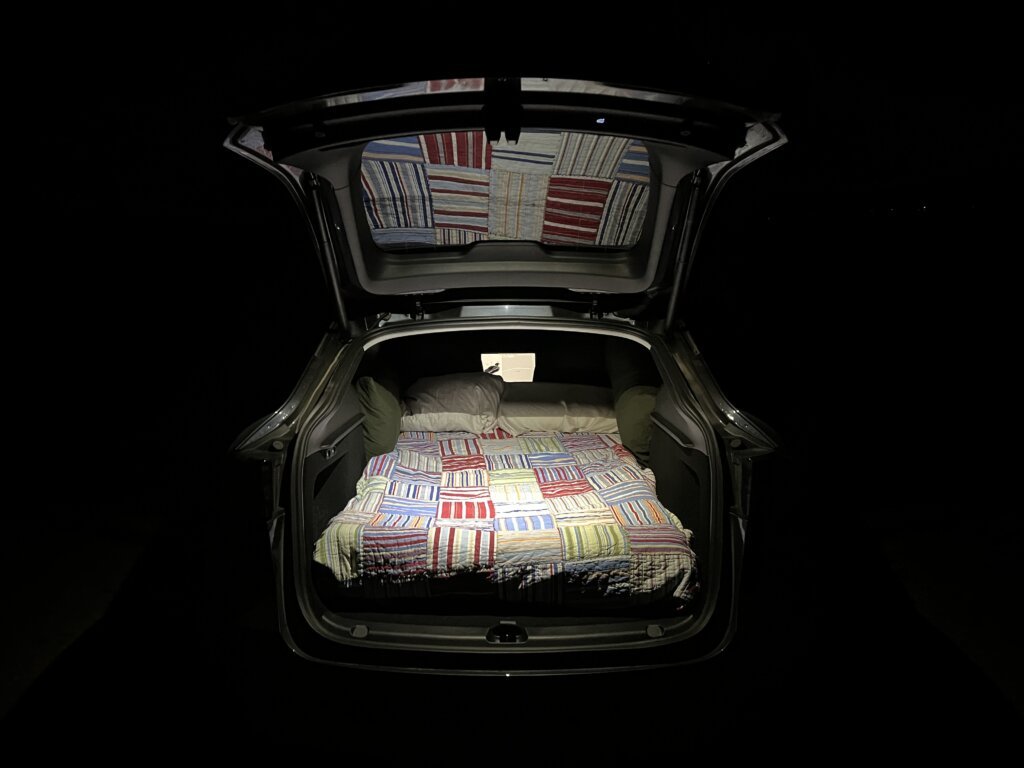
3.4 How much charge is enough to sleep in a Tesla overnight?
In my experience, running climate controls in Tesla Camp Mode throughout the night only consumes about 12% of the car battery (roughly 1-2% an hour). This does depend on outside temperatures. As long as you go to sleep with that much, plus the amount it takes to get to the charging station with a little contingency, you will be fine.
Section 4: Setting Up Tesla Camp and Sleeping
Now the fun part. You did all the hard work with the pre-planning. Get to your campsite, set up your Tesla for sleeping, unwind, and catch some sleep before your next day’s adventures!
4.1 Choosing Your Campsite
If you are dispersed camping, it is important to find a safe and scenic spot. This means one that allows you to get to a charger if needed and does not put you in any danger. Other than that, look for the prettiest spot you can find! The image below is from when I camped in Anza Borrego State Park (dispersed camping).
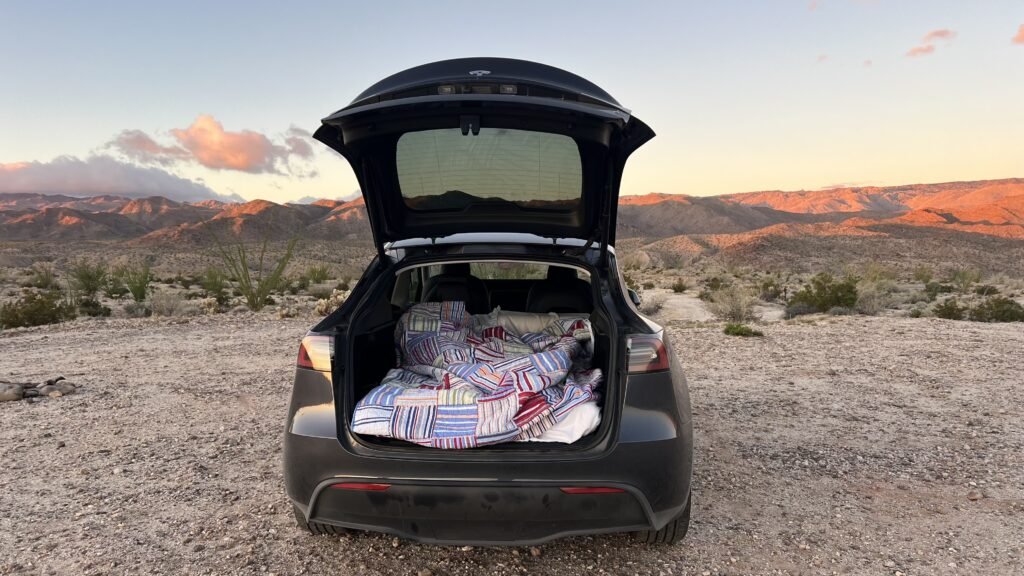
4.2 What exactly is Tesla Camp Mode and how does it work?
Tesla Camp Mode is a feature that allows you to comfortably sleep inside the EV while parked. It optimizes the car’s climate control system to maintain a comfortable interior temperature for an extended period, even when the car is stationary. It allows the lights to be turned on/off and lets you charge your USB devices.
Here’s how Tesla Camp Mode works:
- ❄️ Climate Control: When Camp Mode is activated, the car’s heating, ventilation, and air conditioning (HVAC) system is adjusted to provide a controlled climate inside the EV. This regulates the temperature to ensure you remain comfortable throughout the night, even in the desert!
- ⚡ Power Management: Tesla Camp Mode is designed to minimize energy consumption while still providing adequate heating or cooling. The system intelligently manages power usage to preserve the EV’s battery life, which is especially important when camping in remote areas without access to charging infrastructure.
- 🔊 Noise Reduction: In addition to controlling the climate, Tesla Camp Mode can also reduce certain vehicle noises, such as fans or cooling pumps, to create a quieter environment for sleeping.
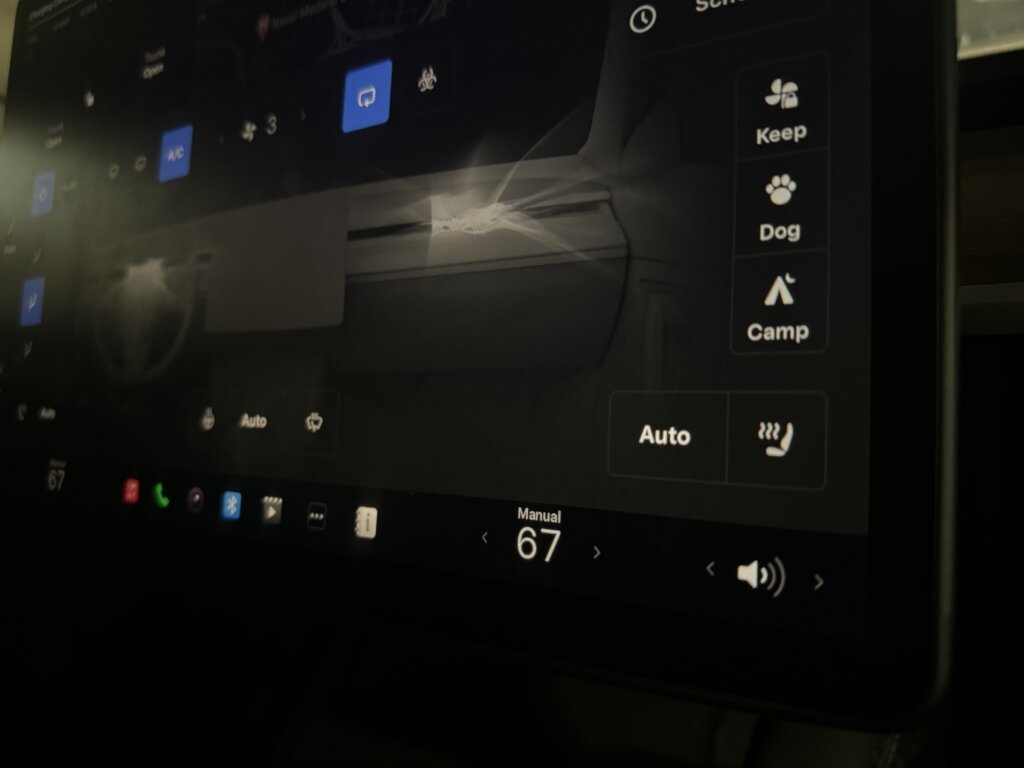

To turn it on, simply navigate to the climate control section of the Tesla touchscreen interface or on the mobile app. Press the button that shows an image of a tent. And that’s it, camp mode has started. You can now set the climate and the Tesla will do the rest. You can turn Camp Mode off the same way you turned it on, or simply by shifting into drive.
Here are a couple of tips about Tesla Camp Mode:
- The car doors do not automatically lock in Camp Mode when you walk away, and Sentry Mode and the security alarm will be disabled. Make sure to lock the car before going to bed, and be cognizant of unlocking the doors when using the bathroom in the middle of the night. It’s a good idea to keep your phone or the car key with you to avoid any issues.
- After Tesla Camp Mode is activated, the screen will turn off automatically after a short amount of time.
- You still use the screen for Netflix or the other features, like fireplace and games, when Camp Mode is activated.
4.3 Setting Up Your Tesla for Camping / Sleeping in a Tesla
In terms of actually sleeping, put down all the seats in the back row(s), move your front seats up a bit, and set up your mattress and bedding. Consider putting up window shades for extra privacy and darkness. Close the doors and lock the car before going to sleep. Keep a light and the car key with you if you wake up in the middle of the night to use the bathroom.
It is worth noting that the sides of the Tesla’s interior do have bumps where the wheels are situated, which makes the surface not completely flat. In my experience, this has not been an issue. The mattress fits right over and is easily tucked into place.
It can be a little difficult getting in and out of the car in the middle of the night. You can either open the side doors or exit through the trunk. I find that using the side doors is slightly easier; however, the negative of this is that the lights turn on.
Section 5: Enjoy Exploring the Outdoors
That’s it! Now you get to enjoy exploring your destination with ease. Pack your favorite snacks, a bottle of wine, and enjoy that beautiful nature from your comfortable and climate-controlled Tesla! …Kidding! Here are some fun things to do on your camping trip:
- Hiking Trails: Pick some scenic hikes and nature walks near your campsite.
- Wildlife Viewing: Try your hand at spotting local flora and fauna in their natural habitat.
- Stargazing: Enjoy the night sky in remote locations where you usually cannot.
- Outdoor Cooking: Get creative with some cooking at your Tesla camp.
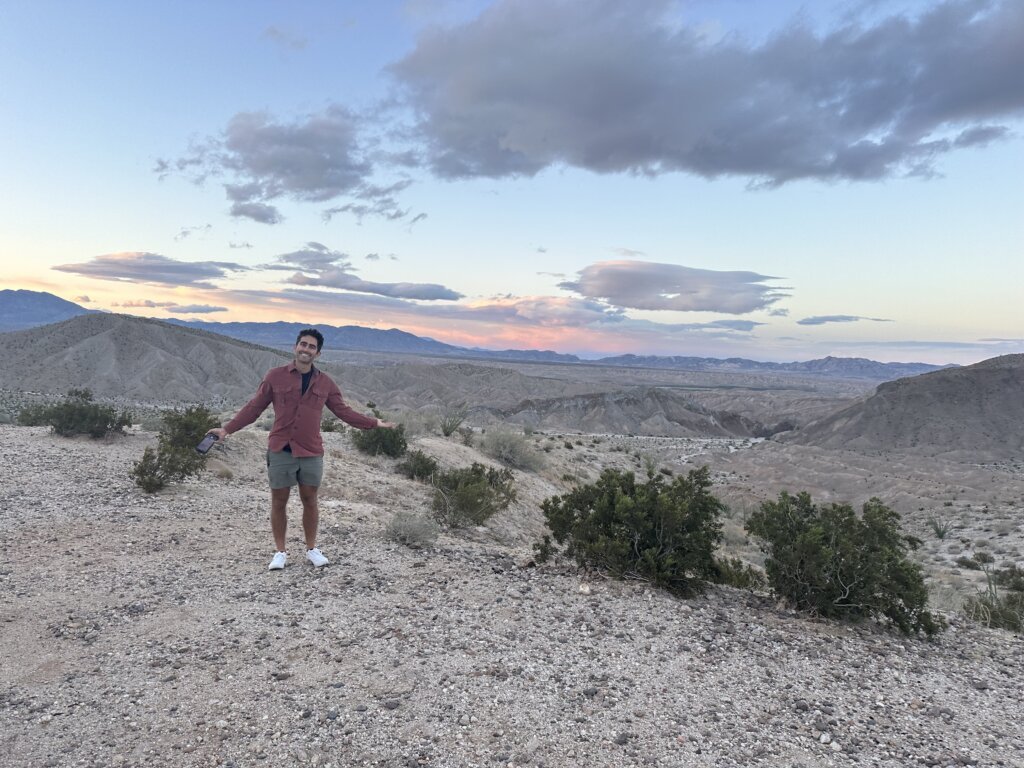
Section 6: Essential Tesla Camping Tips From Personal Experience
After camping in my Tesla Model Y, I have some tips that you may find helpful:
- Purchase a 5-gallon Igloo water cooler (this is the one I use) and fill it before you leave. That way you can be confident you have water for the duration of your trip.
- Bring a roll of electrical tape (the dark opaque kind), or a bit of velcro. There is a light in the trunk of the Tesla that stays on when the trunk is open. I like to cover it up when I camp because it can get in the way of stargazing.
- Bring a rechargeable flashlight for using the bathroom in the middle of the night.
- Download an offline map of the area before you leave so you can get around without cell service.
- Map out the nearby charging stations in case your battery runs low.
- Follow EV good practices to maximize battery range, such as limiting high-speed driving, using regenerative braking, and planning efficient routes.
- Make a profile in your Tesla to save the settings you use during Camp Mode. You can then assign the seats to move to a designated location of your choice upon activation.
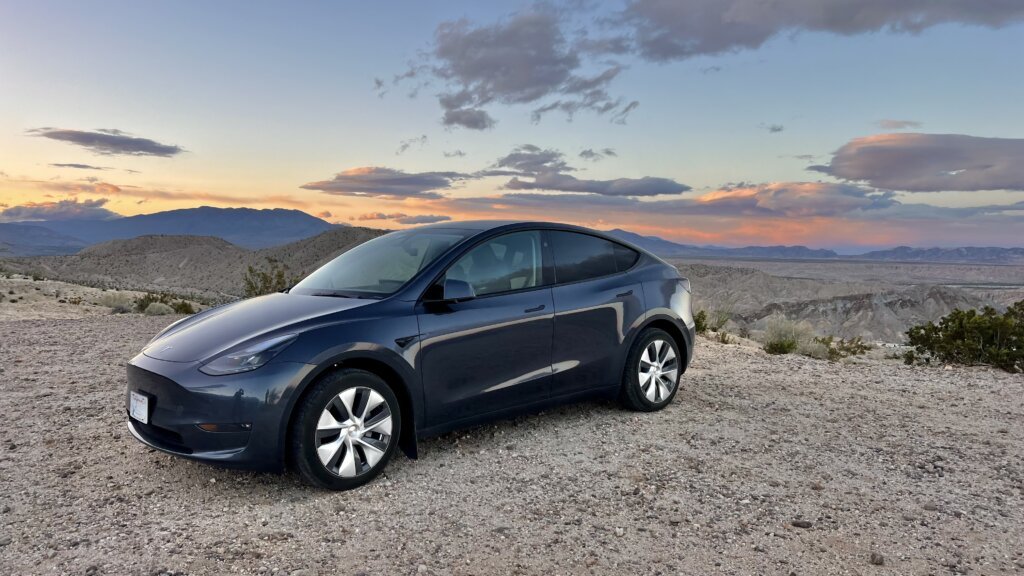
Section 7: Frequently Asked Questions (FAQs)
7.1 What do I do if I run out of battery while camping?
This scenario is easily avoided by following my Tesla camping guide above or by camping at a campground with an outlet. If you are sleeping with Tesla Camp Mode on and the battery gets down to 20%, the car will automatically turn off to save battery and ensure you can get to a charger. However, on the off-chance you do run out of battery, you will have to call AAA or another tow service. Avoid this by planning in advance. Tip: Use “Scheduled Departure” mode to optimize battery use while parked.
7.2 What’s the best Tesla model for camping?
The Tesla Model Y is the most popular for camping due to its spacious cargo area, flat-folding seats, and energy efficiency. However, the Model X offers even more space, and the Model 3 can work with the right setup if you’re solo or don’t mind a tighter fit.
7.3 Are any other electric cars good for camping?
The Tesla is the best electric car for camping and sleeping in. However, the Ford Mustang Mach-E and the Rivian R1S and R1T are also great EV camping options. I’ve heard really great things about the Rivian being excellent for camping. However, I don’t own one so I cannot weigh in. Rivians also have a camp mode function.
7.4 Is it legal to sleep in a Tesla?
Check local regulations before sleeping in a car. In the United States, the legality of sleeping in vehicles varies by state and locality. Many campgrounds will allow sleeping in vehicles regardless of the state, but it is always a good idea to check in advance. Of course, you cannot sleep on the road or while driving.
7.5 Do all Teslas have Camp Mode?
Yes, all Tesla models have Camp Mode. It can be enabled from the climate control screen or the Tesla Mobile App.
7.6. Are there any limitations or negatives to camping in a Tesla?
Some potential downsides of camping in a Tesla are that the lights turn on when you leave the car, charging the battery can be difficult in some remote locations, and the car can be slightly difficult to get in and out of in the middle of the night. There is not a lot of room to sit upright and the doors must be locked manually.
7.7. How many people can fit sleeping in a Tesla?
Two average-sized people can sleep comfortably in a Tesla Model Y.
7.8 How much battery does Tesla Camp Mode use overnight?
On average, Tesla Camp Mode uses 7-10% of the battery per night, depending on outside temperatures. In extreme cold or heat, consumption can be higher. It’s best to start the night with at least 50% charge to ensure enough range for your next stop.
7.9 Can you really sleep comfortably in a Tesla?
Yes! With Tesla Camp Mode, the car maintains a comfortable temperature, powers USB devices, and prevents windows from fogging up. A mattress that fits your Tesla model, blackout window covers, and a well-planned setup make it just as comfortable as a traditional camping experience—without the hassle of setting up a tent.
Conclusion – Comprehensive Tesla Camping Guide
Thinking About Getting a Tesla? 🚗⚡
If you’re considering buying a Tesla, you can get up to $2,500 off your purchase by using my referral link! It is highly recommended to purchase a Tesla through a referral link—it saves you money at no extra cost. 😊
Are you ready to embark on your Tesla camping adventure? With my Tesla camping guide in hand, I’m confident you’ll be well-equipped to experience the great outdoors in the coolest way possible: sustainably! Make some great memories and happy travels!
🔋 Read more EV travel tips here → https://imperfectnostalgia.com/ev-travel/
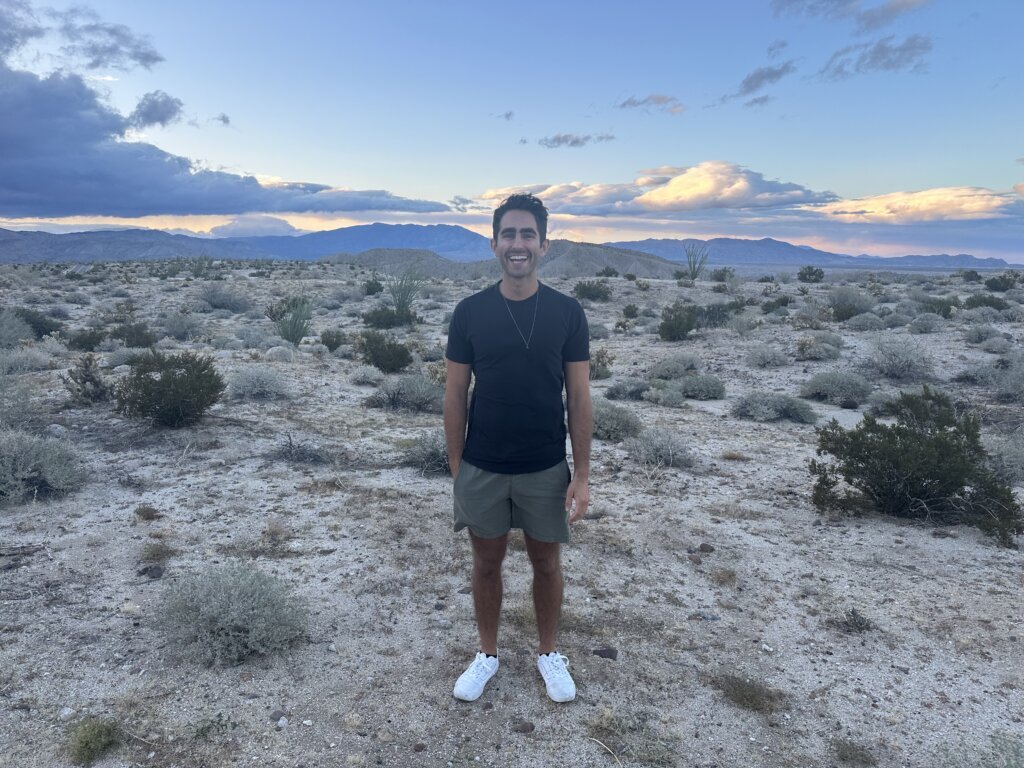
Disclaimer: Factors such as local regulations, weather conditions, and personal preferences can all impact your camping experience. Camping in your EV requires careful planning and consideration, especially regarding charging options. While I strive to offer valuable insights and practical advice, readers are encouraged to supplement this guide with their own research and judgment to ensure a safe and enjoyable camping trip. Please also note that this article contains affiliate links. This means that if you make a purchase through these links, I earn a small commission at no extra cost to you. I only recommend products or services that I have personally used and believe add value for my readers. Thank you for your support!
Last Updated:
Disclaimer: This article is intended to be for informational purposes only and may contain affiliate links. Refer to the full disclaimer for more information.
About the Author: Jonny is a passionate traveler and Tesla owner who has logged countless miles on EV road trips, testing Tesla Camp Mode in real-world conditions. With firsthand experience camping in a Tesla Model Y, Jonny shares expert tips on maximizing comfort, battery efficiency, and must-have gear for the ultimate EV camping experience. When not road-tripping, they’re writing about sustainable travel, electric vehicles, and adventure planning on Imperfect Nostalgia.



